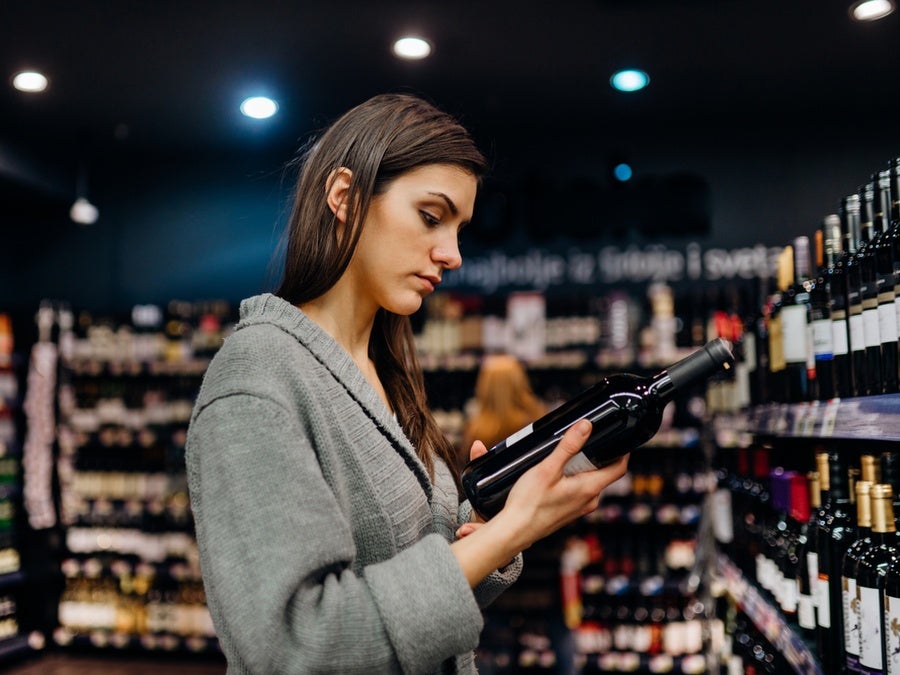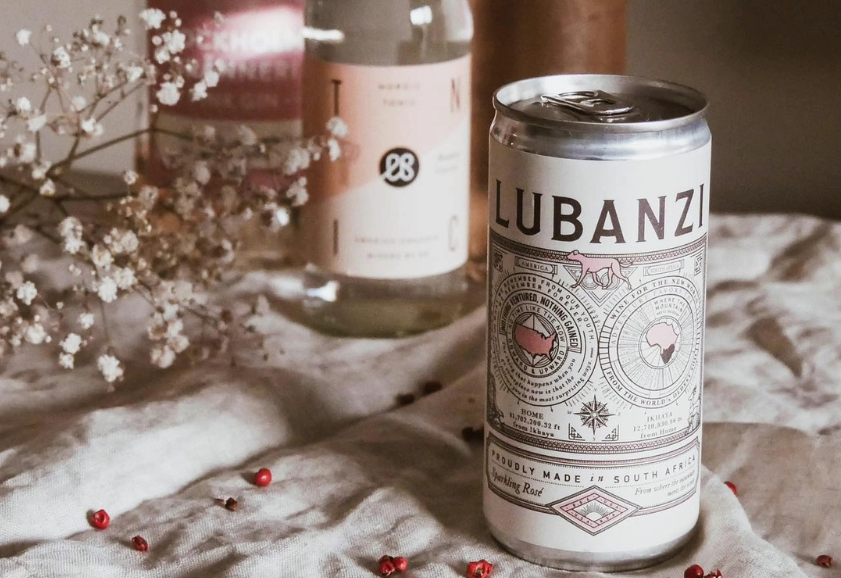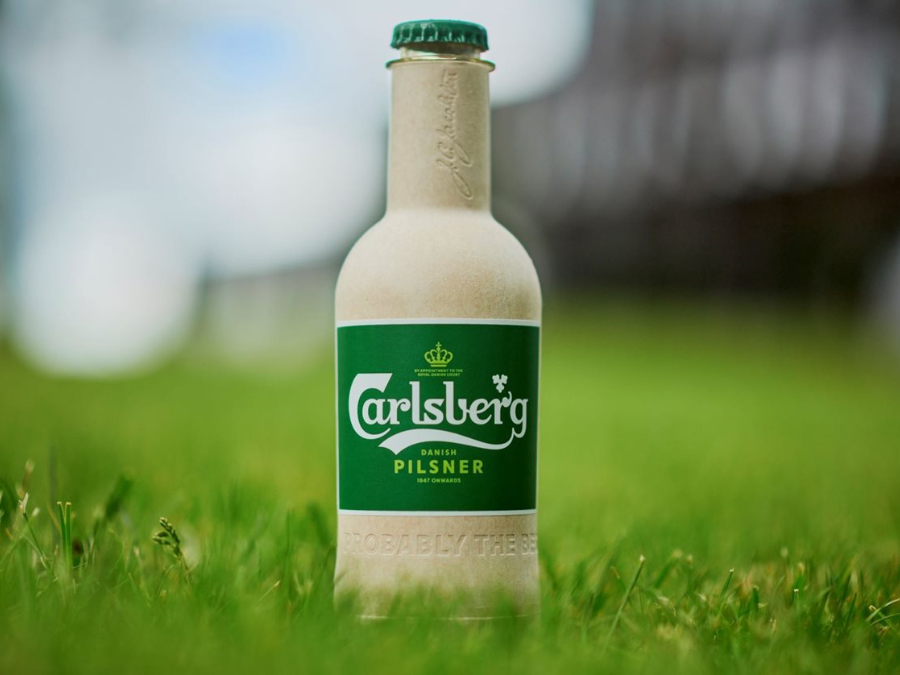
In 2021, beverage companies emitted 1.5bn tonnes of CO2e, accounting for 3.8% of all global CO2e emissions. At present, these are falling at a rate of 0.7% per year, which puts drinks companies off-track to meet their net-zero targets in 2030 and 2050. The rate of carbon reduction needs to improve 11-fold said consultants at Kearney when publishing their research in August.
The findings offer a marker in the sand for an industry that has for one reason or another flown under the radar when it comes to its environmental footprint. Food is taking the flak – and continues to do so at the COP28 summit underway in Dubai. Sure, the big soft drinks brands have faced issues over their use of plastic but generally drinks brands have been able to talk about sustainability on their own terms and avoid much scrutiny.
Consider, for example, the beer and spirit companies that have promoted their carbon-neutral facilities and use of renewable energy. Or the water companies who have stamped ‘carbon neutral’ on their bottles (until recently). Or the wine ranges that have shifted from glass to cans to reduce their carbon emissions. It has been a ‘drip drip’ of well-meaning but insufficient initiatives. “The lack of progress is not a reflection of the industry’s reticence to change but rather is evidence of exactly how tough a problem this is to solve,” the consultants said.
It is tough. By 2030, 1.5bn tonnes of CO2e needs to be 1.2bn to stay on track towards net-zero. By 2050, it needs to fall another 87% to 0.2bn. Kearney noted that: “To effectively reduce their carbon footprints, beverage companies need to implement sustainable practices within their operations and clearly communicate their efforts to consumers.”
These are two considerable challenges. Efforts to reduce emissions through packaging format changes and sourcing of regenerative ingredients are discussed briefly here but the focus is on communicating these to shoppers buying drinks – and whether anyone takes any notice.
It’s fine for wine
As always, there are few silver bullets. It doesn’t help that much of the research in this space seems to lump food and drink together, showing by and large that shoppers want to buy sustainable products but are confused about which ones are ‘greener’ and are increasingly wary of greenwashing. Some experts say the attitudes towards buying sustainable food are mirrored in the beverage aisles but it is far from clear cut.

US Tariffs are shifting - will you react or anticipate?
Don’t let policy changes catch you off guard. Stay proactive with real-time data and expert analysis.
By GlobalDataA UK survey, published in 2021 by Statista, offers a snapshot of where consumers are. Presented with a list of groceries people were asked to identify the ones they’d bought in the last three months that were ‘sustainable’ or ‘eco-friendly’. Fruit and veg came top (25%) but coffee was second (17%) and tea fifth (15%). Bottled water (9%), beer (7%) and soft drinks (7%) came further down the list, while wine (6%) and spirits (4%) were third from bottom and bottom respectively.
The results should of course be taken with a pinch of salt – there is no definition of what a sustainable product is, for example – but are nonetheless intriguing. Do they suggest for example that wine and spirit makers have a tougher job on their hands to engage customers on topics like climate change? Or do coffee brands do a better job of selling sustainability?
Cristina Solis, sustainability consultant at Barcelona-based Green Hive, a platform that says it empowers consumers to make informed sustainability choices, says shoppers consider factors like eco-friendly packaging, ethical sourcing, organic crops and reduced carbon footprint when selecting their preferred drinks. The level of emphasis on sustainability can vary among different types of drinks, however. So, coffee and tea drinkers may be more attuned to fair trade and organic practices, while soft drink consumers may prioritise packaging and recyclability. In beer, there are options among ‘craft’ brews, meanwhile.

Wine may have certain advantages of its own, as Charlie Brain, co-founder of South Africa-based Lubanzi Wines explains. “In our experience, a lot of consumers see wine as an inherently more sustainable category than other items purchased in a grocery store. As a result, they feel less pressure to pick a product based on sustainability.”
Lubanzi was founded in 2016 by Brain and Walker Brown. Its range consists of three vegan wines: a red blend, Chenin Blanc and sparkling rosé, each of which come in standard glass bottles and smaller can format.
Wine producers cannot rest on their laurels though. “More people are becoming aware of the reality that not all wine is equal when it comes to sustainability; there are real and meaningful differences between producers and products when it comes not only to sustainability but also to integrity and accuracy,” says Brain. “This sort of clarity and education about sustainability seems to be spreading fastest when it comes to our staples – meat, dairy, vegetables and fruits – but right behind them are things like wine.”
Others are not so sure. Tim Bourne, CEO at London-based creative agency Exposure, which counts the likes of Diet Coke, Jameson and Malibu among its clients, says in general there is “very low consumer motivation to buy drinks based on environmental or sustainability claims”, which means efforts on everything from packaging and carbon mitigation to reducing waste and sourcing regenerative ingredients are mostly “invisible” to consumers.
That takes some bottle
That can have its advantages. For example, wine retailers from around the world recently committed to a new accord that will result in 750ml glass bottles slimmed down from 550g to less than 420g by the end of 2026. The change will save 23,000tCO2e. Even thinner bottles are possible – 330g in some cases.
Until recently, a thin bottle wasn’t something any maker would want to shout about: the perception was that consumers thought this would signify lower-quality wine. There was reluctance to change for fear of losing consumers and market share. These now appear unfounded for most markets. The new accord – led by the Sustainable Wine Roundtable and supported by the likes of Naked Wines USA, Systembolaget AB, Lidl GB and The Wine Society – was accompanied by research showing that “[…] there are no convincing arguments against the use of lightweight bottles for wine”. The perception that consumers associate heavy glass bottles with higher wine quality has in fact been overstated.
The ramifications of such research are considerable given that the single biggest source of carbon in the wine industry is the bottle – and most significantly the carbon emissions from the manufacturing of the glass bottle also known as the embedded carbon. Other materials are available too, of course, including those touting lower carbon emissions.

Brewers and spirit makers have been changing their packaging to lighten their carbon footprint, moving from glass to trials with paper bottles. Carlsberg reckons its fibre-based bottles could have 80% fewer greenhouse gas emissions than the single-use glass equivalent. The first priority is ensuring the new packaging maintains the quality of the beer, but perception is also key – which is why soft drinks manufacturers are also investing in such technology.
Coca-Cola is involved in the paper bottle project with Carlsberg (through the start-up Paboco) while PepsiCo and Diageo are working together (through sustainable packaging company Pulpex). Whether this is all purely for marketing remains to be seen – the brands will have to evidence that changes at scale would be ‘better’ from an environmental standpoint. A shift from glass to paper might have some weight behind it but moving from widely recyclable PET to paper mightn’t stand up scientifically.
Plastic’s footprint
Carbonated drinks brands are under the cosh for their use of plastics though – and not just in terms of marine pollution. Bloomberg recently reported that Coca-Cola, PepsiCo and Keurig Dr Pepper – the world’s three soft drinks companies – had a combined footprint of 121MtCO2e in 2020 and the production of plastic contributes a decent portion of those (30% in the case of Coca-Cola for example). Coca-Cola, Nestlé and Danone are also under fire for some of the recycling claims made on their drinks.
Plastic can come with a lighter footprint – moreso if it is recyclable, recycled and made from increasing amounts of recycled content. Anheuser-Busch InBev’s 2022 ESG report shows greenhouse gas emissions by packaging type: PET comes in at 7.43kgCO2e/hl, slightly power than returnable glass (7.92kgCO2e/hl) and far lower than cans (24.14kgCO2e/hl) and single-use glass (47.91kgCO2e/hl). Returnable kegs offer the best solution, at 1.29kgCO2e/hl.
Plastic is far from fantastic from consumers’ point of view, though. Budweiser in a bottle made from PET doesn’t currently work practically or promotionally. “Plastic continues to be a red flag when it comes to sustainability,” says Rowena Curlewis, CEO at Denomination, a drinks design consultancy based in Australia, the UK and the US. This could in part explain why sustainability tends to be more of a consideration when shopping for food compared to drinks: plastic is still used widely in food packaging.
Curlewis adds: “In research we conducted through Wine Intelligence in 2022, we definitely saw a correlation between those consumers who were highly engaged in the category were more likely to be influenced by a brand’s sustainability messaging than those who were less engaged. […] those consumers care about carbon, sustainable packaging, and the impact on chemicals on the environment.”
Whether consumers generally place as much pressure on drinks brands to commit to net-zero and dramatically reduce their emissions remains moot. “The focus on sustainability in drinks mirrors the trend in food purchasing decisions,” Solis says, “but it’s worth noting that food brands have faced more scrutiny in recent years.”
Indeed, campaign groups have tended to target the big food companies rather than the big drinks firms when it comes to critiques of net-zero plans, carbon reporting deficiencies or the green claims they are making. This is not surprising when you consider the hefty footprints in the world of food manufacturing: the likes of Nestlé, JBS and PepsiCo all produce in excess of 60MtCO2e a year. Kraft Heinz is responsible for around 45MtCO2e and Mars close to 29MtCO2e, according to a Just Food analysis last year.
In vino veritas
Coca-Cola weighed in with 64MtCO2e but, after that, AB InBev appears to be among the biggest emitters in the sector, producing 27.8MtCO2e in 2022, while Diageo produced 6MtCO2e in the same year. Smaller than those food behemoths – Coca-Cola aside – but enough to deserve more than a passing interest.
Research by academics in the Netherlands and Germany, published in the Journal of Cleaner Production in 2022, showed that total emissions reported by the world’s largest 50 food and beverage companies amounted to 0.9GtCO2e – which is higher than the emissions of Germany (the sixth highest emitting country in the world) and all of aviation combined. And that figure, due to poor reporting, is likely to be an underestimate.
Only 500 food and beverage manufacturers control 70% of the world’s food choice, the scientists noted, which gives them “substantial influence” over the sustainability of food production compared to the individual food producers or consumers. “Food and beverage manufacturers are also typically the most visible part of the agricultural value chain,” they added, “meaning that consumers wishing to make sustainable choices may do so based on the reputations of these companies”.
Carbon cheers and fears
At COP28, the climate talks taking place in Dubai, there is more scrutiny on emissions from food than ever before. There is a day dedicated to the sector, and already more than 130 countries have signed the Leaders Declaration on Food Systems, Agriculture and Climate Action, which for the first time marks a commitment to cut carbon emissions in the global food system. Which presumably includes drinks, too.
Are the likes of Diageo, AB InBev, Heineken and Pernod Ricard ready for the attention that could follow this summit?
Food companies like Tyson Foods, Danone and Nestlé have been under the spotlight since making their net-zero commitments. It hasn’t been pretty – but that’s not surprising given that most have struggled to reduce their total emissions, while some have yet to even publish their full Scope 3 emissions (which tend to account for at least 90% of all a food company’s emissions). Others, like dairy group Arla and meat giant JBS, have fallen foul of advertising regulators for over-stated or under-evidenced claims.
The drinks industry hasn’t experienced the same scrutiny and focus on sustainability from consumers as food (or fashion). This is explained by the environmental impact of those other industries as well as their prominence. The sexy innovations that grab attention for sustainable food-seeking consumers, like plant-based poultry and cultivated beef, are not as apparent in the beverage sector.
Interest in the role of regenerative agriculture could change this, providing drinks brands with an opportunity to not only curb emissions but also to bring people ‘closer’ to their beers, wines and spirits.
“Think about Guinness,” explains Gill Wilson, sustainability marketing professor at IE Business School in Madrid, Spain. “Firstly, they call it ‘regenerative farming’, [which is] a bit more consumer friendly. Their focus is on farmers, they are still in the pilot phase of course but they are communicating on these pilots, then the way they have fed that through into their marketing, with the Guinness pint, the black stuff being the soil, the head as the crops, the harp forming roots, with the strapline “good things are taking root”, linking back to Irish heritage and farmers seems a natural link.”
This won’t work for all brands, Wilson says, so understanding what both sustainability and regenerative agriculture means to their consumers is critical. “I feel there is a lot of putting round pegs in square holes with sustainability,” she adds, but “not every brand needs to talk about every aspect of sustainability. Sure, you need to work operationally on [everything in order to achieve net-zero], but from a brand perspective not everything is relevant or interesting to your consumers.”
Net-zero heroes?
These days it is tempting to say nothing rather than something. Brands are fearful of greenwashing as both regulators and campaigners scrutinise adverts and accounts alike. It will therefore be interesting to see what drinks brands have learned from their counterparts in food. Hiding away – or greenhushing – is unlikely to be the best solution.
Demands on brands are increasing, says Rob Hollands, CEO of Switzerland-based premium spirits marketplace Metacask. “In particular, the brands people choose to engage with, are held more accountable for their sustainability policies,” he explains. “They are increasingly asking that brands communicate their sustainability commitments and actions more visibly and that they see this reflected in the quality of ingredients used, how and where ingredients are sourced from and the environmental impact from production and in packaging.”
GlobalData research shows ‘climate change’ mentions in beverage companies’ filings have increased from just 7,501 in 2016 to an estimated 31,396 in 2023 – a fourfold increase. Mentioning it and doing something about it are very different of course – and this is something beverage brands need to be wary of.



